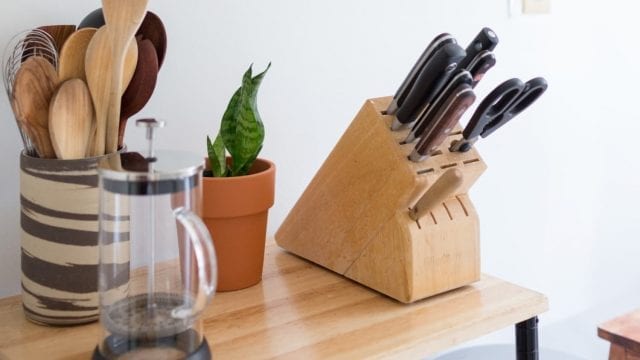
Whether you’re a novice in the kitchen, a world-class chef or somewhere in between, it’s always good to have the right tools in your kitchen to create your culinary magic. While pans and pots are really important, good knives are essential to become the culinary master you’re supposed to be.
However, if you are like most people, when you see a knife set you probably have no idea what the knives do or how they are used. Yes, they are all used to cut the food and you can probably recognize the butcher’s knife, but for all the other knives you probably have questions like “What is a chef’s knife?”, “What’s that?”, “How do I hold the pointy-end knife”, “Santoku?”.
Luckily, we are here to help you learn when to use each knife, and after reading this guide, you will be one step closer to being an awesome chef.
Chef’s Knife
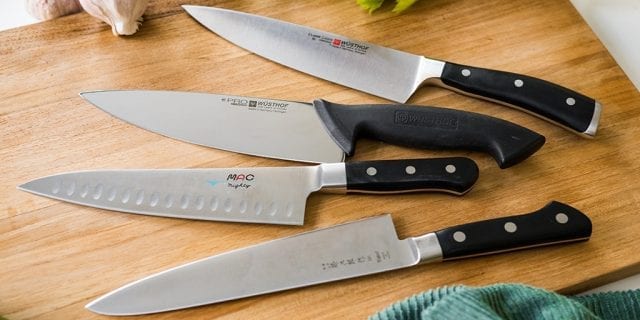
When you think of a cooking knife, you probably have an image of a chef’s knife on your mind. This blade is ideally 8 or 9 inches long and it can be used for almost everything. The chef’s knife can be used every day for slicing, chopping, dicing and mincing.
Remember that this knife needs to be sharpened more frequently because of its constant use. There are a lot of versions of this knife with different sizes, so you can choose the one that you like the best.
Bread Knife
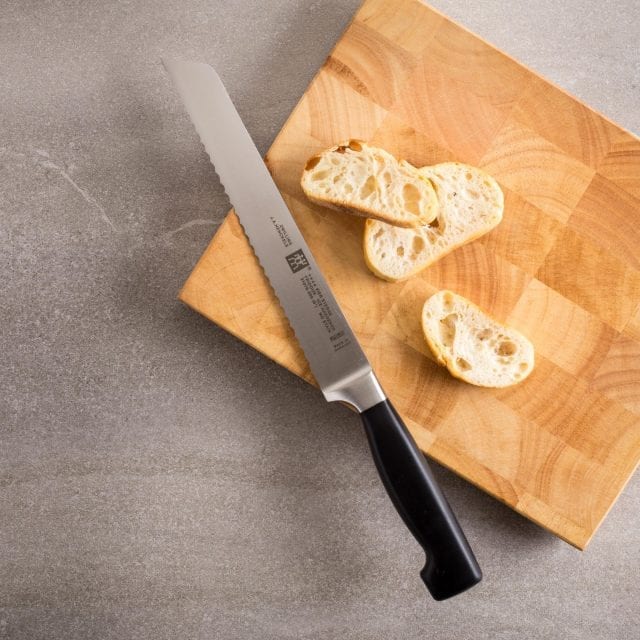
The long, rectangular blade of the bread knife is serrated with small grooves at the bottom. You’ve probably seen this knife a lot of times in your life. In case you’re not a huge bread lover, you probably won’t use this knife as frequently as the other knives on this list.
However, when you need to slice a baguette, there’s no other knife that can do a better job than the bread knife. The long blade helps slice through large loaves of bread and the serration helps cut the crust without crushing the airy bread. These knives are a great tool for slicing tomatoes. You probably wondered how people can present a dish made with thin slices of tomatoes and they look as perfect as they would be cut using a mechanical tool.
Well, the secret is in the bread knife. The serrated blade slices directly through the skin without crushing the delicate, soft parts of the tomato. Bread knives also work wonders on other thin-skinned fruits like peaches and nectarines.
Santoku
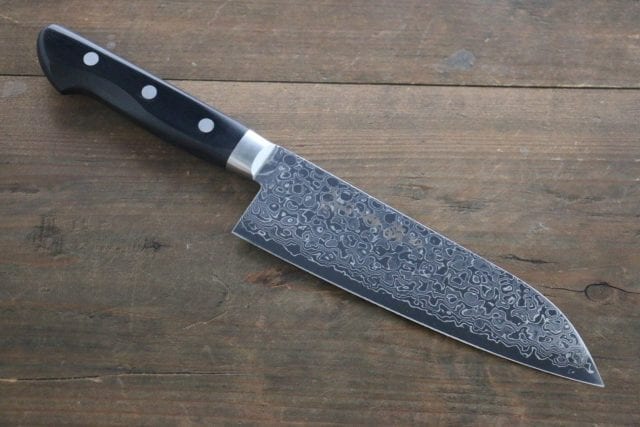
The santoku knife, as its name suggests has its roots in Japan. As we all know, Japan is famous for the really sharp sword blades that can slice through anything with ease. “Santoku” means “three virtues” and that’s a really good name for this versatile knife. It has a round, cleaver-like tip at the end and small dimples on the edge of the blade.
The small dimples are great for preventing ingredients from sticking to the knife. Just like the chef’s knife, santoku can be used for a lot of different tasks in the kitchen. The blade usually remains sharp for a long time, and when you decide to sharpen it, you should get it professionally done. Read more about santoku and how it should be kept at americangr.
Cleaver
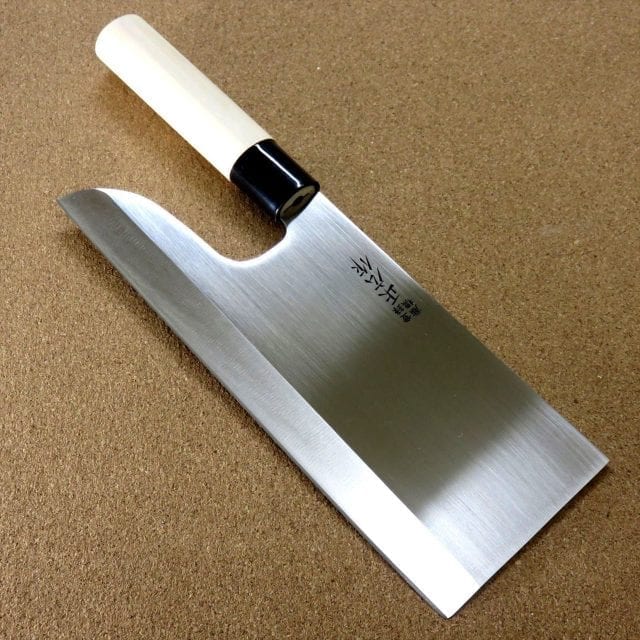
The butcher’s knife or the cleaver is mostly used in horror movies. Okay, in kitchens as well. If you are not starring in the next horror blockbuster, you can use this knife to break down hunks of meat. It has a rectangular, heavy blade and it can break through every bone and meat without damaging the knife.
Fillet Knife
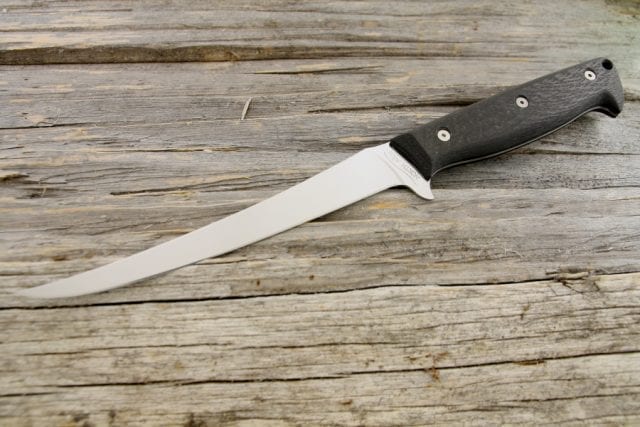
This knife has a very long and thin blade. It’s used mostly for carving fish. The pointy shape makes it easy to delicately slice through the fish and make fillets and remove the bones with ease. If you are a fish lover, you will use this knife constantly in your kitchen.
Carving Knife
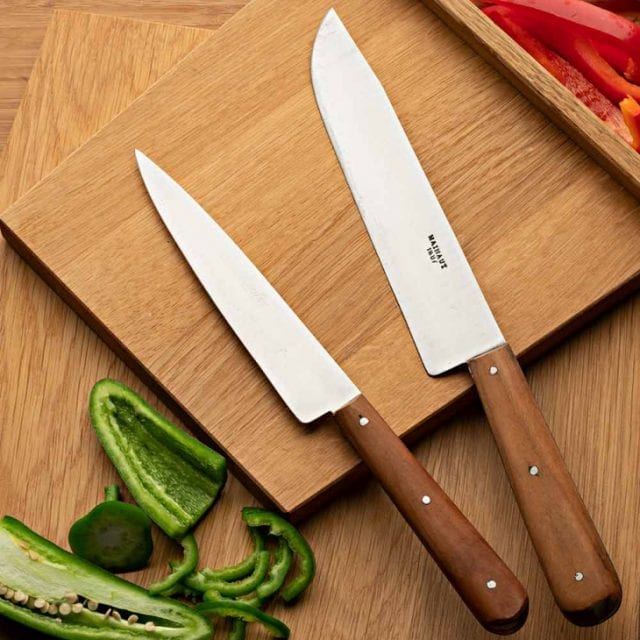
The carving knife is essential in every kitchen. It’s larger and thinner than a chef’s knife and thanks to this type of blade, you can cut thin slices of meat. If you love party-hosting you can show your skills off with this knife. In every other case, you will always have extra thin cut meat every time you sit down to have a meal.
Paring Knife
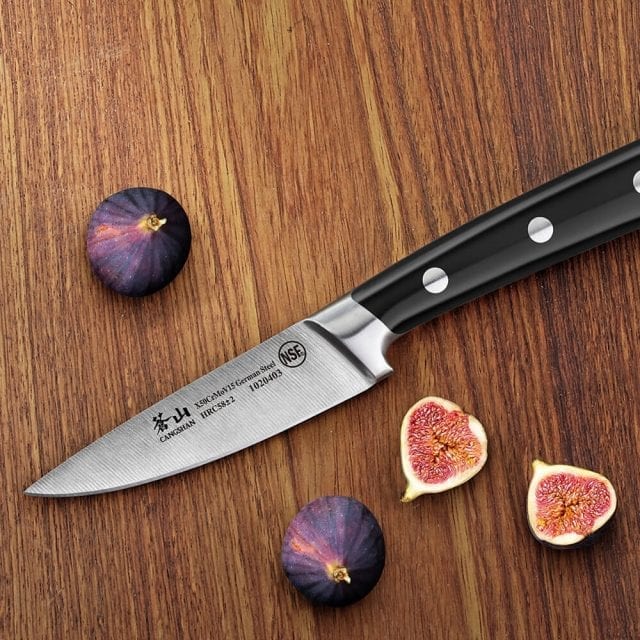
The paring knife is a vital part of every kitchen set because it’s small, delicate and it’s easy to manipulate in your hand. It is mostly used for peeling and trimming vegetables and fruits. Because of its size, you will be able to make a masterpiece of every small food that gets in your hands. With the paring knife, you can segment citrus fruits like a pro and your guests will be amazed by your skills.
Kitchen Shears
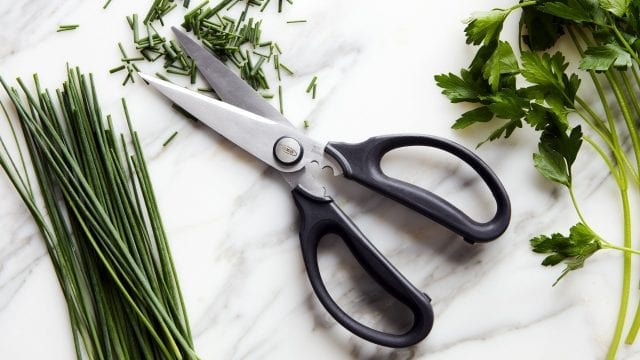
Shears are not technically knives, but they are a huge part of every knife set. We use scissors frequently when it comes to meat cutting. They are great for chopping off the excess skin off, the fat and to open up the chicken breastplate so you can show your skills off. Heavy-duty kitchen shears should be a part of every good kitchen set.
Knife Sharpener
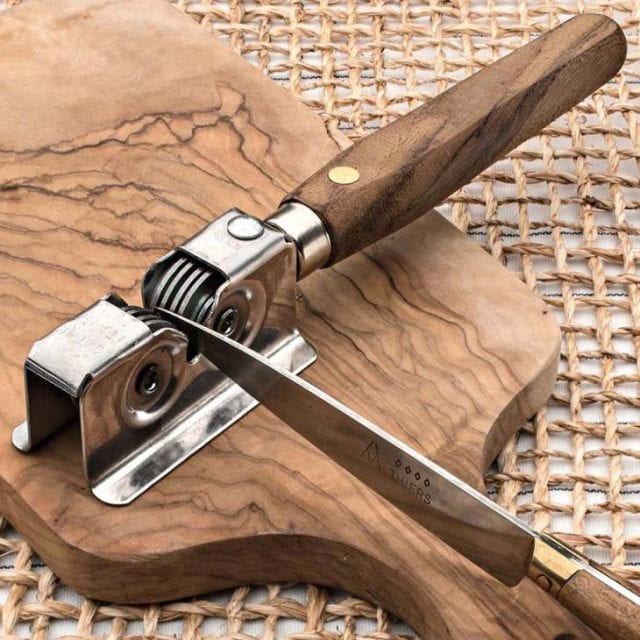
A knife is worth as much as it is sharp. If your knife’s blade is blunt, you cannot do anything with it, no matter how good your culinary skills are. Knife sharpeners come in many sizes and shapes and they can be manual, electric or honing steel rods.
The sharpener you choose depends on the space you have, and for most people, honing steel rods are the best choice between the needed space and the right sharpener. Even if you have an electric sharpener, it’s recommended to take your knives to be professionally sharpened once in a while. There are many kitchens and knife-sharpening services that could help you have kitchen-ready tools at all times.
You probably know a bit more about knives now, right? And you probably realized you have a santoku and a fillet knife on the bottom of your drawer and you’ve never used them before.
Well, now is the time to prepare a gourmand meal that everyone will enjoy. One last tip – always hand wash your knives. We know it’s easier to put them in the dishwasher, but by hand washing them you will extend their lives, keep the blade sharper for a longer time and you won’t risk damaging them.





